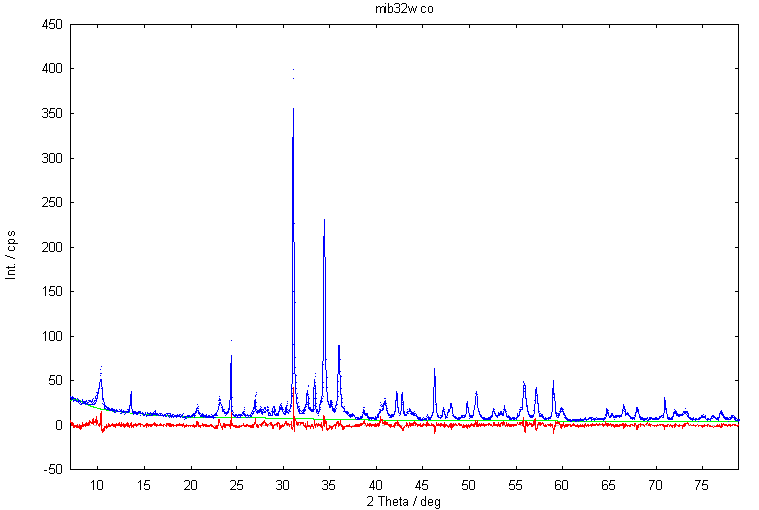
Site map










Site map |
||||
 |
 |
 |
 |
 |
 |
 |
 |
 |
|
The deposited material is mainly carbonatic black shale (containing quartz, illite-muscovite, calcite, dolomite, plagioclase and ore minerals like sphalerite, galena and pyrite) and some sulfatic-carbonatic wall rock (Zechstein).
Drilling profiles in old dumps where investigated to look for changes in mineralogy and geochemistry by dissolution/precipitation processes. One question was the buffering capacity of the carbonatic material. We had to look for changes in carbonate content and the neoformation of gypsum and other secondary minerals dependent on the depth.
lattice parameters, crystallite size line broadening for all minerals
different orders of spherical harmonics preferred orientation correction, up to 6th order for sphalerite
anisotropic line broadening for muscovite
K site occupation for muscovite (tendency for substitution by hydronium ion)
strain broadening description for the carbonates (partially iron-zinc-magnesium-substitution?)
zero point (limited) and sample displacement
automatic selected background polynom At first, a batch of about 40 measurements was prepared by simple renaming of one input file. After the first run, only the sphalerite reflections showed poor fitting in some samples. A new setting of limits for reducing the order of preferred orientation model resulted in better fitting in a second run. Remaining rest peaks in difference plot can be caused mostly by grain statistics.
The calculation time needed was about 15-25 minutes per sample. The full batch was done over night, the Rietveld operator slept at home. In some samples, up to 3 phases (mostly cerussite, galena and pyrite) were not detectable. In this cases, the program calculated small concentrations (below 1 wt%) and errors in the same magnitude. If all parameters of such a 'dummy' phase were shifted to the defined limits, the error was insignificant and a concentration of 0 was calculated.
| Sample mib32 | Sample mib15 | |
|---|---|---|
| Parameters | 144 | 148 |
| Calc. time/min | 20:34 | 19:26 |
| Rwp/% | 11.65 | 11.24 |
| Quartz | 19.1(3) | 17.0(3) |
| Calcite | 23.5(4) | 19.0(4) |
| Muscovite 2M1 | 33.1(7) | 32.5(7) |
| Albite | 5.8(4) | 6.0(4) |
| Dolomite | 11.2(4) | 13.8(3) |
| Pyrite | 1.5(2) | 0.9(2) |
| Sphalerite | 1.6(1) | 2.2(1) |
| Galena | 0.38(5) | 0.71(5) |
| Cerussite | 0.72(5) | 1.50(6) |
| Gypsum | 3.1(3) | 6.4(4) |

Fig. 1: Rietveld refinement plot of sample mib32
2401 measuring values, 667 peaks, 144 parameters
Start: Tue Nov 25 03:19:23 1997; End: Tue Nov 25 03:39:57 1997
Rp=9.20% Rpb=16.63%
R=9.40% Rwp=11.65% Rexp=7.71%

Fig. 2: Rietveld refinement plot of sample mib15
2401 measuring values, 667 peaks, 148 parameters
Start: Mon Nov 24 21:24:58 1997; End: Mon Nov 24 21:44:24 1997
Rp=8.60% Rpb=16.17% R=8.70%
Rwp=11.24% Rexp=7.59%